When you kayak on the water, the wind is a significant issue related to the speed, safety, and efficiency of paddling. How much wind is too much for kayaking?
On your favorite waterways, weather conditions can be your worst enemy. You will enjoy the regular wind and a breezy environment.
But, extreme or too much wind will affect your control of the kayak on the water. It doesn’t mean that a windy day is not suitable for kayaking.
If you know the condition of the weather and wind, you can prepare yourself for a safe and comfortable kayak journey on rivers, oceans, or lakes.
This writing will guide you about the possibility, risk, and caution of kayaking on a windy day or on waterways.
Table of Contents
How Much Wind Is Too Much for Kayaking
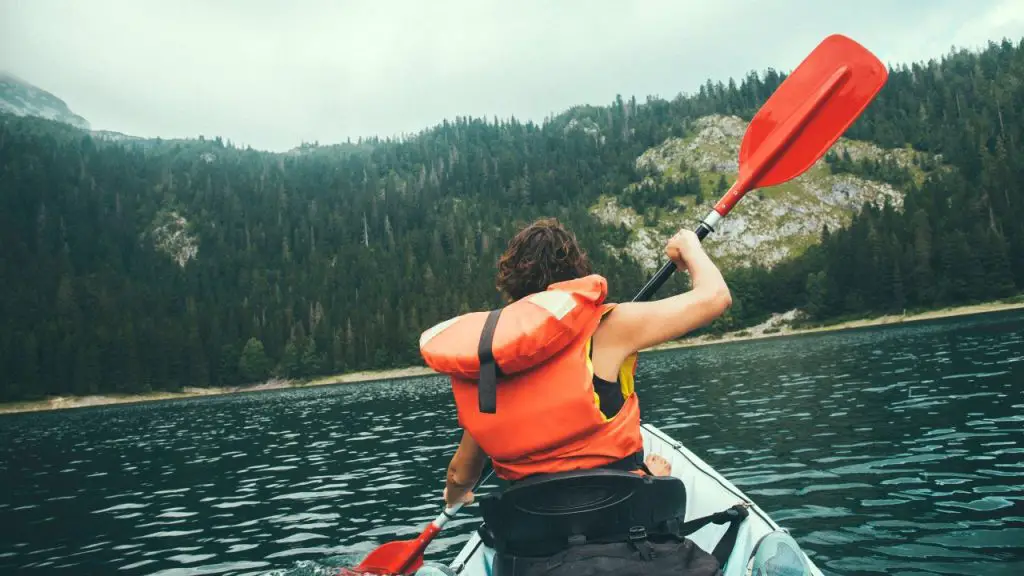
In general, wind speeds below 7 to 10 knots( 8 to 12 mph) are ideal for beginners.
On the contrary, if you are intermediate to the advanced level paddler, you can go when the wind speed is around 11 to 16 knots (13 to 18 mph). You should avoid kayaking as an intermediate kayaker when wind speed changes.
The wind speed above 17 knots or 20 mph is dangerous. Speedy wind can instantly change the direction of the kayak.
This speed is recommended for advanced paddlers with enough strength, skills, and stamina. Remember, when wind speed is around 22-27 knots (25 to 31 mph) it is not suitable for safe kayaking.
It is important to know the safe wind speed for kayaking. This idea will help you to go safe kayaking on a windy day.
You can feel the environment and make your decision. The thing depends on the wind speed and your personal decision.
| Types of kayak | Safe wind speed | Dangerous wind speed |
| Recreational Kayaking | 7 to 10 mph | 8 to 12 mph |
| Sea Kayaking | 4 to 7 mph | 8 to 10 mph |
| Whitewater Kayaking | Upto 15 mph | 20 to 25 mph |
| Kayak Fishing | 10 to 15 mph | Above 15 mph |
For Recreational Kayaking
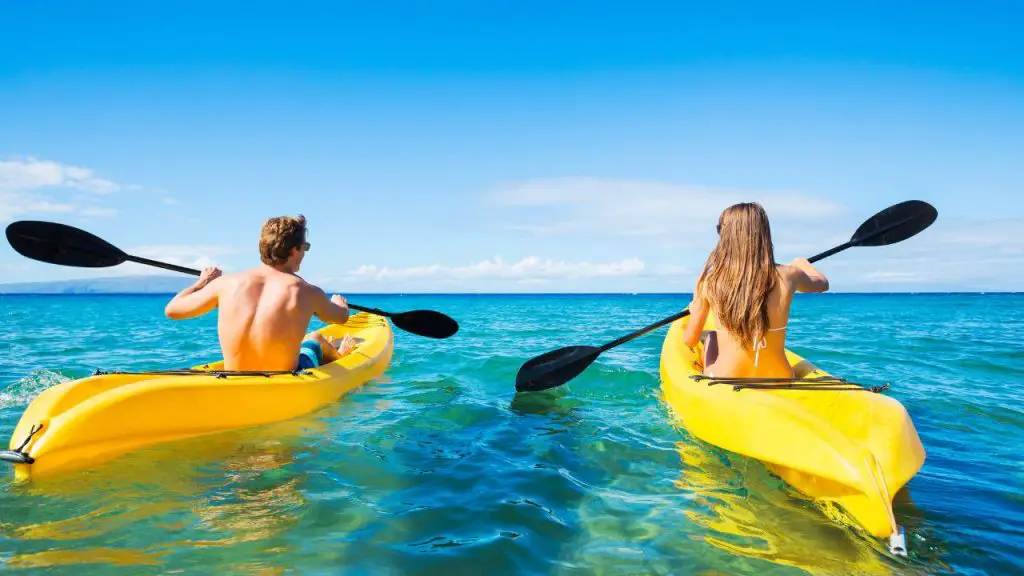
Recreational kayaks are designed to perform with great stability in high wind with fewer impacts. The safe wind limit for recreational kayaking is 7-10 mph. This speed can not affect the movement and the water body will remain calm.
On the contrary, the 8 to 12 mph wind speed is considered the maximum or dangerous level while paddling a recreational kayak. This speed can change your kayak route. You have to force the paddle with more stamina to survive in this condition.
You can follow some easy tricks to make sure that you are going to kayak at wind speed
- Check the latest wind forecast before starting kayaking in your location.
- You can test it physically by paddling in the wind. It helps you to understand the speed and your capability of paddling.
- Fix the nearest shoreline to land in case of any difficulties produced by speedy wind.
For Sea Kayaking

Sea kayaking is a little bit more dangerous than typical kayaking. It is recommended to kayak on the sea if you are a skilled kayaker.
The safe wind speed on the sea is 4 to 7 mph per hour. Wind can change the height and speed of the wave. So, you have to understand the movement of the wind too.
Besides, you shouldn’t kayak when the wind speed is more than 8 mph. Sea kayaking is dangerous with wind speeds of around 8 to mph. High waves destroy you in a second.
You can follow these tips to start safe kayaking
- Check the weather condition along with wind speed.
- Make sure there is no weather warning message.
- Try to wear safety gears that will secure you in high waves.
For Whitewater Kayaking
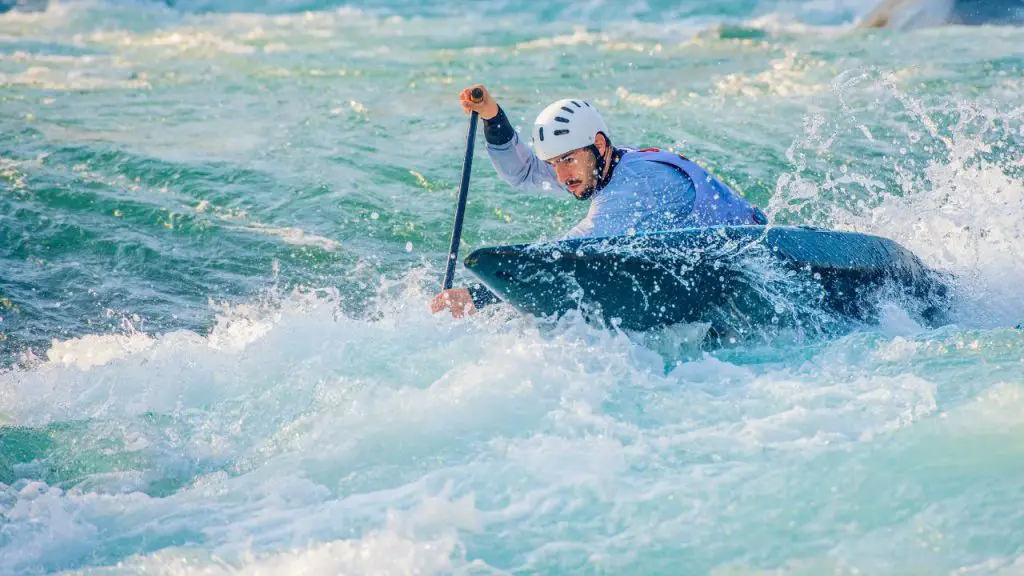
Wind speed is not a major issue for whitewater kayaking. But, the water flow rate can certainly change the situation. You may face difficulty when water and wind work together.
The safe wind speed is between four and nine miles per hour. You have to consider the underwater current with the speed.
If the wind speed is more than 15 miles per hour, it will be difficult to paddle and control the kayak.
Here are some effective tips for whitewater kayaking
- Be aware of the upriver
- Avoid a rainy and stormy day
- Don’t move faster than the average speed
- Try to wear necessary safety gears
For Kayak Fishing
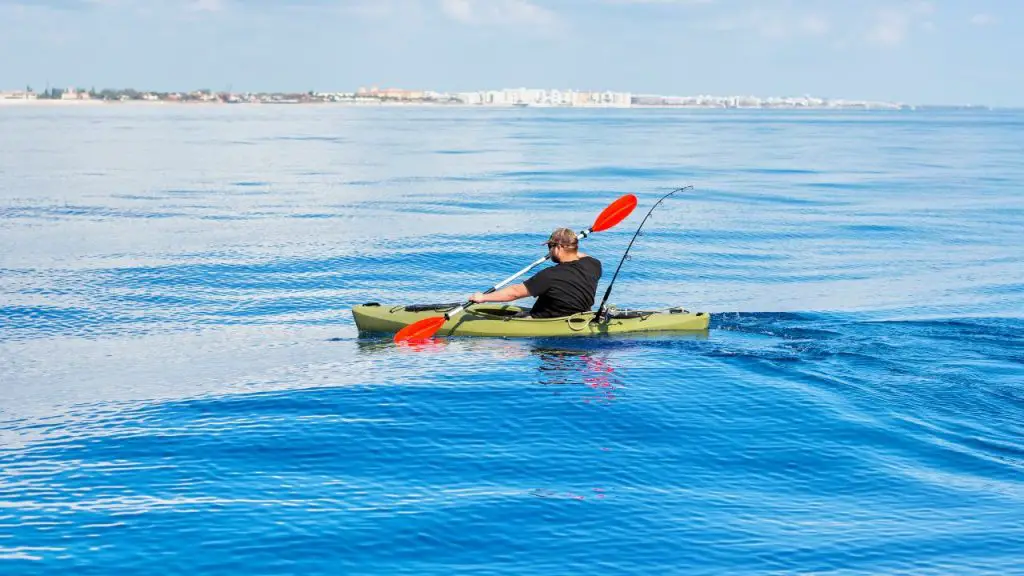
Kayak fishing is suitable for distinct waterways. You can do it on freshwater, saltwater, and or lake water. The important fact is that wind can affect your kayak fishing. You should be aware of the safe and dangerous wind speed limit.
The safe water speed for kayak fishing is 10 to 15 miles per hour. You can move and do fishing safely with this wind speed.
On the contrary, kayak fishing is dangerous when the wind speed is more than 15 mph.
You should consider these things while preparing for kayak fishing
- Check the location and regular wind nature
- Try to fish close to shore
- Use the wind direction to set fishing whole and move upward
- Know about your local waterways
Risks If Wind Is Too Much when Kayaking
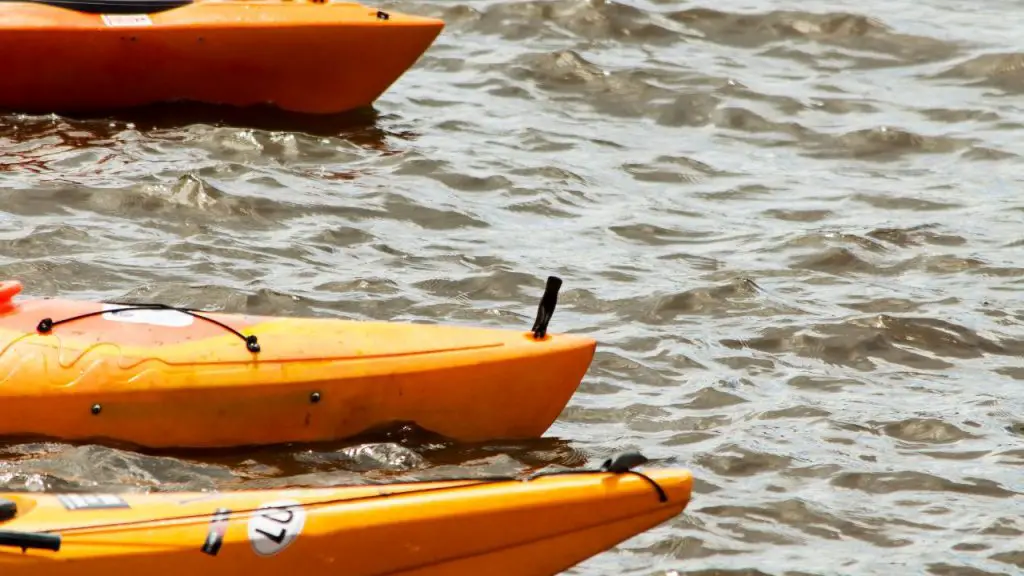
You already know the safe and dangerous wind speed for aking on different waterways. If the wind is too much, it will be risky for kayaking. Water and wind are closely related to affect the current and waves.
More wind means more waves. Wind with 12 knots (14 mph) to 14 knots (16 mph) speed can change the direction and make huge differences. It creates large waves. You will face difficulty while paddling on water bodies with large waters.
Besides, super windy conditions in the sea or ocean can pose a serious threat to your health. You have to put more pressure on paddling.
Similarly, you will lose energy faster when trying to paddle against a strong wind. Fatigue faster can run out your energy before getting back to shore.
Some kayakers may face seasickness in lots of waves. In this condition, your kayak can rollover.
How to Deal with Strong Wind While Kayaking
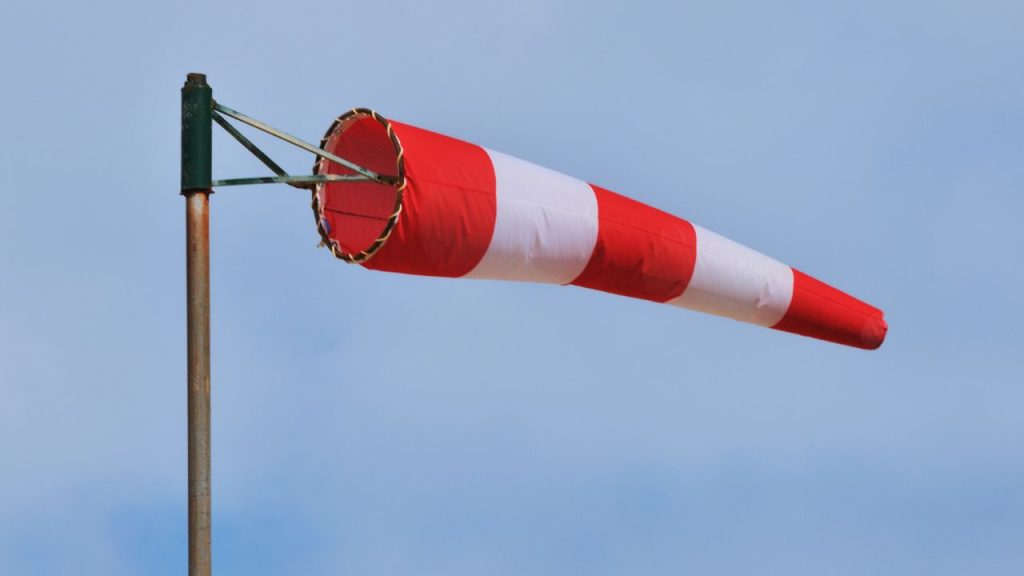
Sometimes, there will be sudden wind on the water bodies. You can not handle or escape from the situation if you don’t have enough skills.
The most dangerous thing is that strong wind can enhance the wave’s speed and change the direction of your kayak instantly. You can prioritize some steps to paddle in this dangerous condition.
First, try to understand and assess the wind speed with exact direction. It will enable you to find the best way of kayaking to the shore.
Second, it is better to paddle with angle than paddling directly. It will take less energy and allow you to paddle for a long time.
Third, fix your aim to the shore and paddle upwind to your target destination.
How Do You Identify Wind Speed?
Identifying wind speed is a major issue for safe kayaking. If you know the wind speed, you can control the kayak conveniently.
There are four major ways to identify wind speed while kayaking. These identifying method will enable you to understand the speed, direction, and current characteristics of the water on water bodies. Let’s explore.
Use Anemometer: This is a tool for measuring wind speed. It has a spinning wheel. The wheel rotates when the wind blows. The rotation depends on the speed of the wind.
Then, the anemometer counts the number of rotations and calculates the wind speed. You can attach an anemometer with a vertical rod. Then hold it for a few minutes and follow the wind speed on the meter connected to it.
It is very simple and easy. Make sure the handle or rod is small enough to carry and hold on to the kayak.
HoldPeak 866B Digital Anemometer Handheld Wind Speed Meter
WindAlert: WindAlert gives you live wind alert on the go. You can follow the map for wind forecasts and get the latest reports from the real-time weather stations.
Select your location on the website. You can do it on the map or by entering your location, city name, or zip code. The interface is easy, user-friendly, and accurate.
NOAA: It stands for national oceanic and atmospheric administration. It is an American scientific and regulatory agency. NOAA forecast weather, monitor the oceanic atmosphere, and expose the sea condition. It helps users to understand the current situation of the sea wind to reduce the risk to marine areas.
The web interface is easy to use. There is a drop-down menu on the left. You can select the forecast that you want.
You can estimate the wind speed by using Beaufort Scale. This scale observed wind conditions at sea or on land.
Wind Direction and How to Kayak
Kayaking on a windy day requires more safety than regular time. Wind direction is a vital issue and you can kayak safely by following the direction.
Headwinds
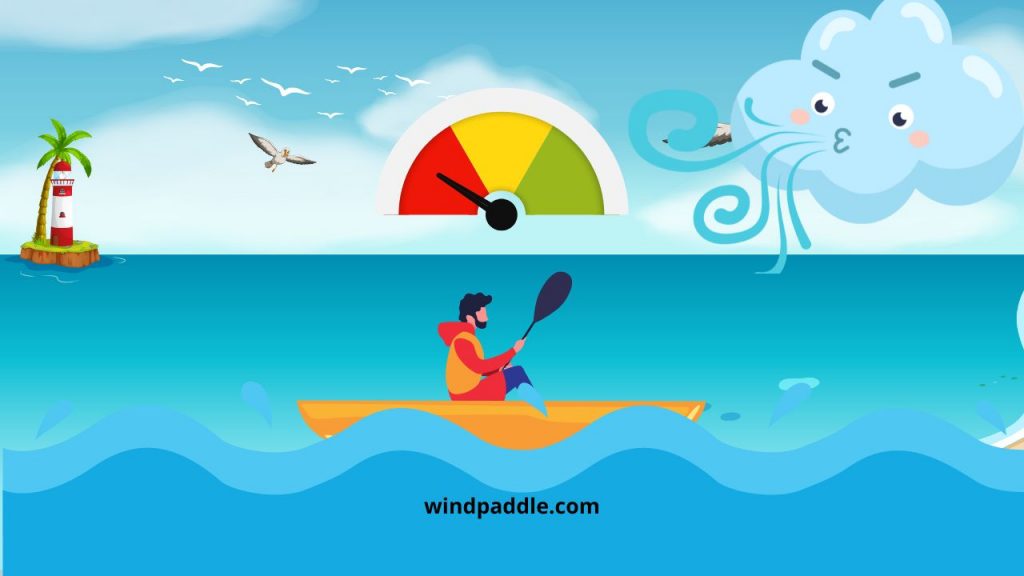
When the wind directly blows against your kayak, it is called a headwind. That means the wind is coming straight at you. This condition is not too dangerous and you can kayak safely until large waves start.
The wind and waves can slow down your speed. But, you should move straight against the wind. If the wind is strong and out of control, you can avoid headwind paddling.
Make sure you are paddling when the wave hits your kayak. Continuing paddling on the wave will enable you to cross the wave and maintain a relaxed paddling. You can consider using a paddle leash.
Tailwinds
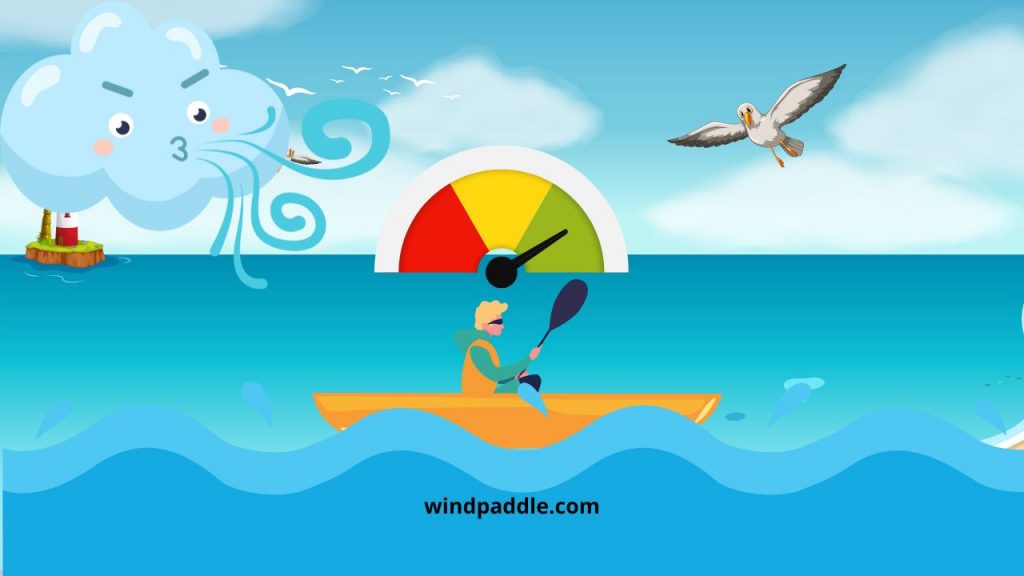
Tailwind blows from behind in the direction of the route. You can boost your kayaking speed with a tailwind. At the same time, it is challenging. Additional speed from the wave can move your kayak faster than normal speed.
Besides, you can not handle your kayak when a bigger wave suddenly comes. So, you have to slow down paddling and understand the tailwind to kayak safely.
Crosswinds
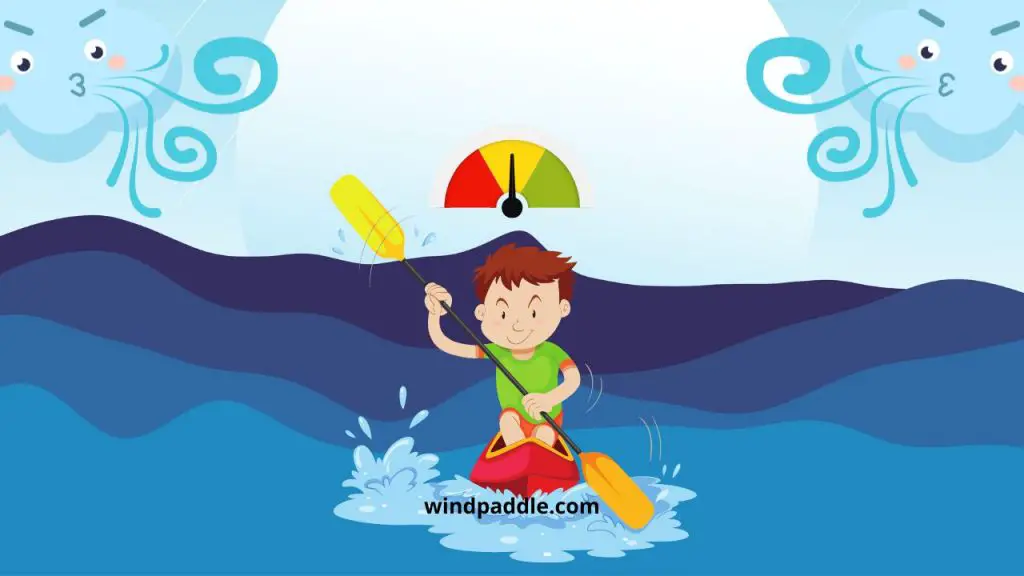
Crosswind blows from both sides of your kayak. Kayaking in a crosswind is the biggest challenge for paddlers and only experienced paddlers can survive in this condition.
It will be very difficult to stay on the route and maintain the balance of the kayak. You should turn in the direction of the wind and try to move forward. Hold your kayak confidently and try to balance the direction.
You can paddle one paddle-half to continue the speed of the wave and your kayak. Make sure you have enough grip to hold the paddle even at a dangerous speed.
Tips to Prepare for Kayaking
You can not ignore safety issues before starting kayaking. Preparing your kayak is a challenge. We find some useful tips that will help you to prepare your kayak.
Safety Gears: Don’t hesitate to take additional safety equipment whether you are paddling on flat, windy, or seawater. Safety gears will enable you to survive in a dangerous situation.
Float Plan: Prepare a perfect float plan. It includes the starting time, nearest shore map, return time, and more.
Know the Risk and Limitations: Before starting kayaking, you should be aware of the risk and limitations of your kayak. Make sure that
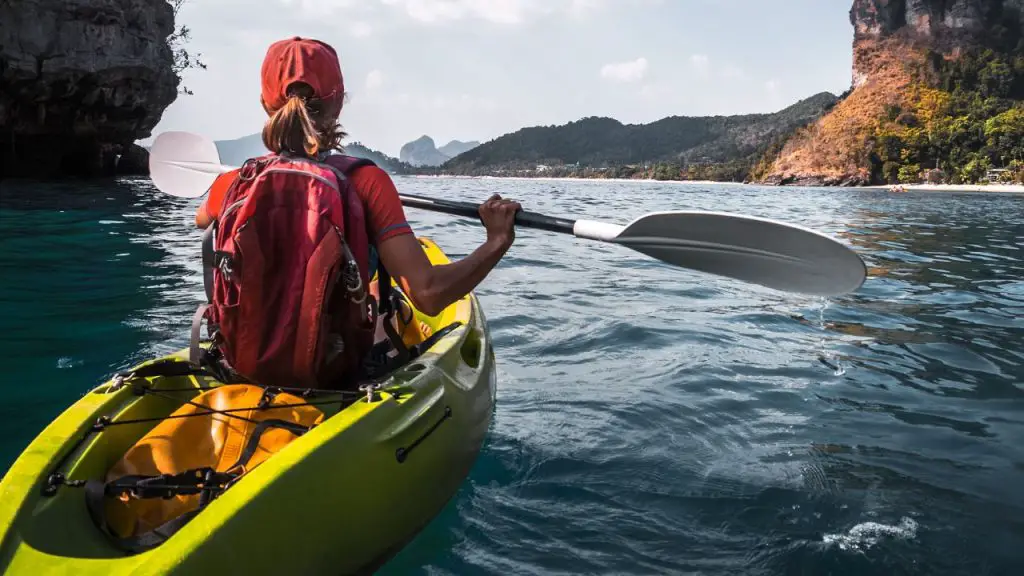
Check the Weather Forecast
The weather forecast will give you a holistic idea of the following day and the next days of the week. You will have a clear idea of your location including wind speed, rain, waves, and more.
You can plan the best route and ensure safety by observing the forecast. It’s your duty as a paddler to kayak in good weather.
Prepare Proper Safety Equipment
Proper safety equipment makes your journey safe and secure. You can enjoy kayaking and protect yourself from dangerous situations. Here is some necessary equipment.
● Quality PFD: A quality personal device will enable you to float on the water bodies if your kayak rolls over due to excessive wind, strong current, or waves.
● Whistle: It is an emergency item to alert other paddlers or boats on the water. You can avoid clashes and accidents by whistling from a safe distance.
● First aid kit: You should always have a first aid kit while doing outdoor recreational activities. It will help you to reduce the injury and apply primary treatment during an emergency.
● Spare paddle: The additional paddle will give you backup on the water when your primary paddle is not working. It is very helpful for windy weather or high current water bodies.
● Rescue kit/throw bag/tow line: Kayaks are made with a special floating design. But, a kayak can go down for several reasons. You should have a rescue kit to overcome that situation.
● Paddling gloves: Paddling gloves enable you to paddle comfortably for a long time. It will work as an anti-slip cover on the paddle.
● GPS or compass: Gps compass will help you to get in the right direction. Sometimes, it is difficult to select the position and direction on the water.
● Paddling jacket/windbreaker: A paddling jacket is designed for comfortable paddling on the water. You can paddle safely by wearing this special jacket. Other paddlers can identify you from a safe distance.
First Aid Kit with Tourniquet
Always Good to Paddle With a Partner
Try to kayak with a partner. It will increase your confidence level. You will get instant help during an emergency. Besides, outdoor recreation will give you more happiness with a team.
If you lose direction due to heavy wind your partners will help you to escape from the situation.
Stay Close To Shore
When kayaking in heavy wind, stay close to the shore. It will give you more balance during paddling.
You can instantly stop paddling and come back to the land. Besides, you can ask for help if there are other paddlers.
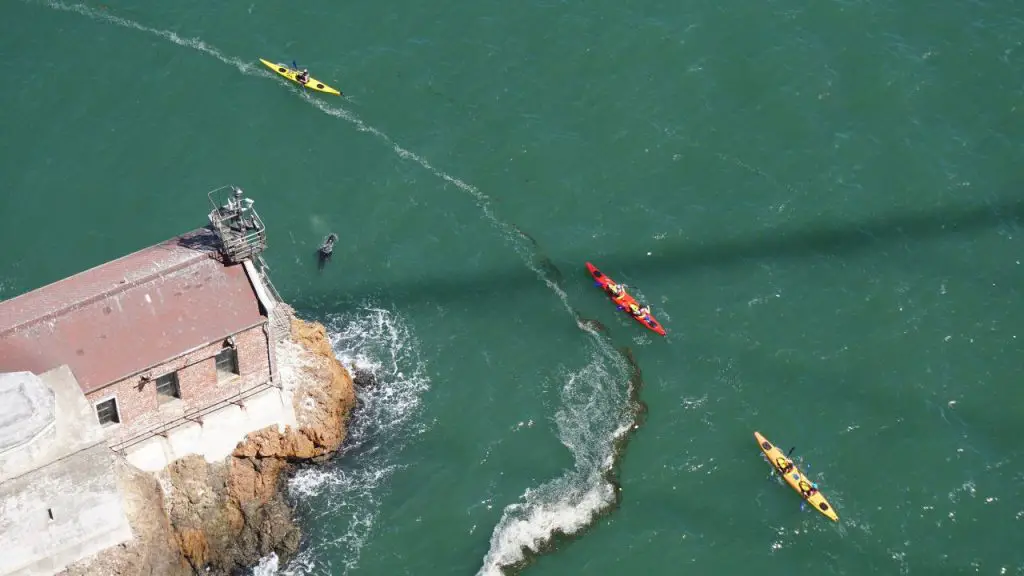
Know Right Channels to Contact The Appropriate Authorities
You should have the necessary contact information for an emergency. Make a list of authorities who will rescue you from a dangerous situation.
Besides, track wind speed from a renowned channel. It gives you accurate information to kayak safely.
FAQs
How much wind is bad for kayaking?
It depends on the type of kayaks. For recreational kayaks 8 to 12 miles of wind speed is bad.
How do you know if it is safe to kayak?
You have to check the weather forecast and track wind speed from trusted authorities and compare it with the safe wind speed that suits your kayak type.
What should you not do on a kayak?
Don’t return your kayak offshore against the heavy wind. It will change the direction of your kayak instantly.
How much wind is too much for kayak fishing?
Above 15 mph wind is too much for kayak fishing. You can not balance the kayak and catch fish in this situation.
How much wind is too much for paddle boarding?
14 mph wind is too much for paddle boarding. Extra wind will make it more laborious and less fun.
Summing It Up
Finally, it can be said that kayaking on a windy day is not too risky if you have enough skills and the necessary equipment.
But, the weather is unpredictable. It is recommended to follow the weather forecast and prepare yourself for kayaking on a windy day. It will make kayaking safe on any water body.
Besides, try to know your limitations and make sure everything is fine for kayaking.


